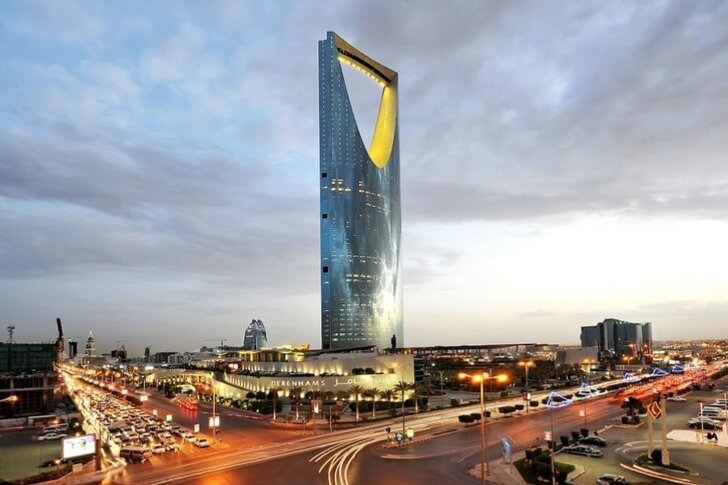Saudi Arabia is known throughout the world as the birthplace of Islam, a country with the strictest Muslim traditions and strict observance of Sharia. Here, mainly religious tourism is widespread - millions of Muslims make the Hajj (pilgrimage) to holy places as a performance of the Pillars of religion. The authorities of Saudi Arabia even allocate quotas for each country so that during the Hajj, Mecca does not drown in the endless human sea.
For an ordinary tourist, the state has recently opened, but a visit is possible only accompanied by employees of a Saudi travel agency. What to see as a guest in Saudi Arabia? Muslim shrines (only for those who profess Islam, representatives of other faiths will not be allowed there), the most beautiful coral reef of the Persian Gulf, the beaches and embankments of the seaside Jeddah, the endless and hottest Rub al-Khali desert in the world.
Built and ennobled thanks to huge oil revenues, the cities of Saudi Arabia are quite a comfortable place for tourists. But it is necessary to remember the numerous prohibitions and rules that apply to a foreigner: a ban on alcohol, on wearing inappropriate clothing, on communicating with women, on visiting certain places. In case of violation, the lightest punishment is expulsion from the country, in more serious cases, everything ends in prison.
What to see in Saudi Arabia?
The most interesting and beautiful places, photos and a brief description.
Mecca city
"Mother of cities", the main shrine of all Muslims of the world, the holy city in which the Prophet Muhammad was born. During the annual Hajj, more than 4 million believers come here, the entire infrastructure and economy of Mecca is tied to pilgrims. Representatives of other religions are prohibited from entering, as evidenced by the relevant road signs.

Al Haram Mosque
One of the three main Muslim temples in the world, the "forbidden mosque". Its construction began in the 7th century, over the course of hundreds of years the building was rebuilt many times until it acquired its modern look in the 16th century. Throughout the 20th century the territory of the temple was constantly expanding in order to let in as many pilgrims as possible. Now the area of the mosque is 357 thousand m², it is crowned with 9 minarets under 100 meters high.
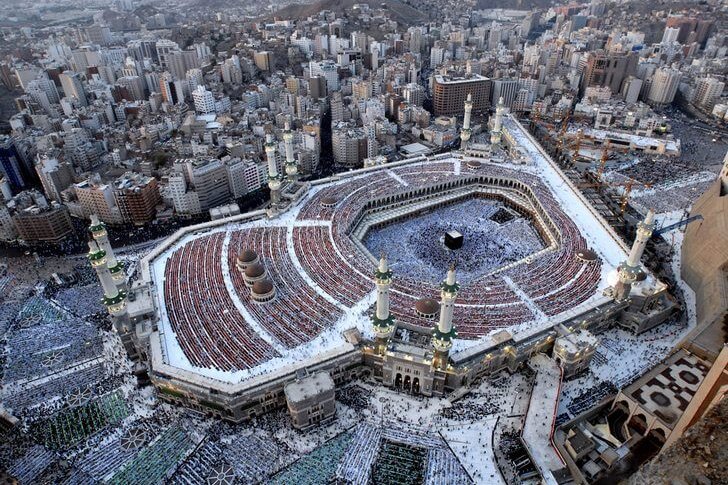
Kaaba
The sanctuary in the form of a black rectangle inside the Al-Haram mosque. For Muslims, it serves as a guideline in which direction to turn during prayer. Translated from Arabic, "kaaba" means "cube". It is believed that the very first building of the sanctuary was built by heavenly angels. In the future, it was rebuilt several times by people.
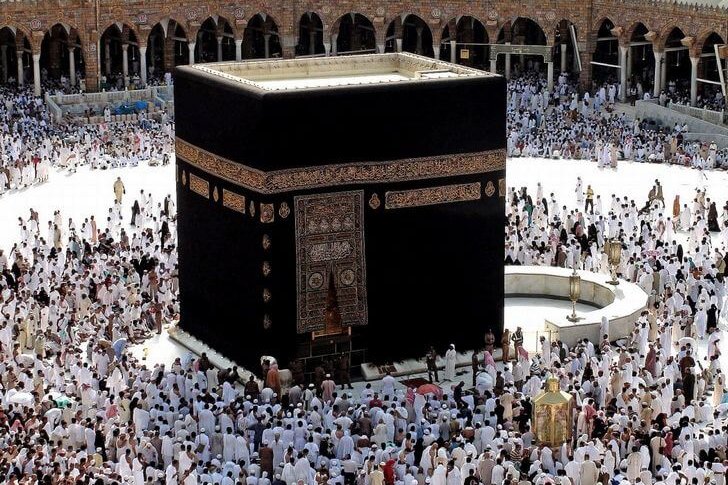
An-Nabawi Mosque
The second shrine of Islam in Medina. It was erected by Muhammad and his companions. Here, under a green dome, is the tomb of the Prophet. It is inferior in size to the Al-Haram mosque, but it has 10 minarets over 100 meters high. The temple accommodates up to half a million believers, its architecture is accepted as a canon for the construction of mosques around the world.

Al Quba Mosque
It is the very first Muslim temple. The Prophet himself also took part in its construction. Namaz in this mosque for the followers of Islam is equated with Umrah (according to the hadith at-Tirmidhi). The building is included in the city limits of the Medina, although in ancient times it was 4-5 km away. from the city.
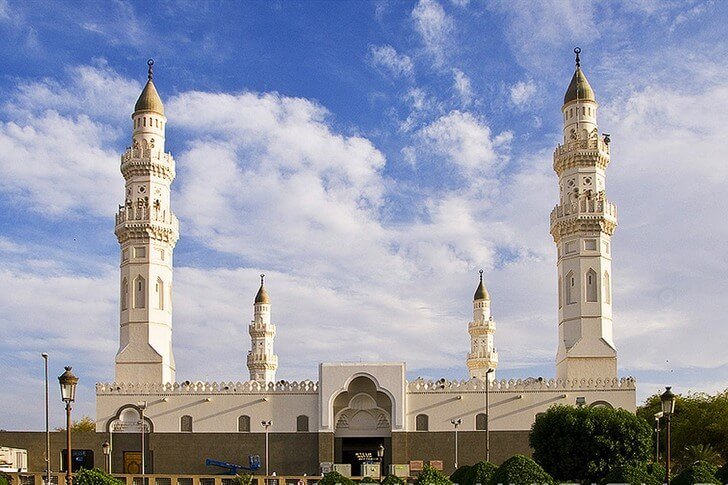
King Fahd Bridge
Connects Saudi Arabia and Bahrain. The structure is included in the list of 14 longest bridges in the world. The bridge is named after King Fahd ibn Abdel Aziz al Saud. On weekends, long lines of cars line up here, as the Saudis leave for a neighboring state, where the norms of Islam are not so strict, and you can afford "extra".
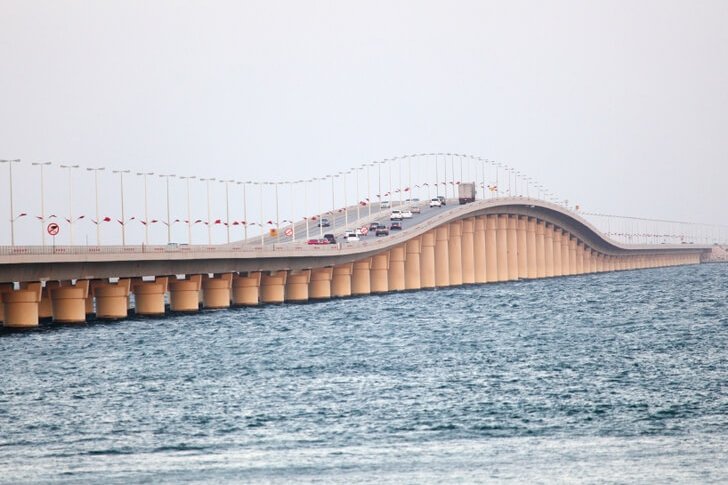
Fahd Fountain
The tallest fountain in the world in the city of Jeddah, named after the fifth Saudi king. It is a powerful jet of water rising 312 meters into the sky at a speed of almost 400 km/h. This effect is possible thanks to a cunning pump design that pumps more than 600 liters of water per second.
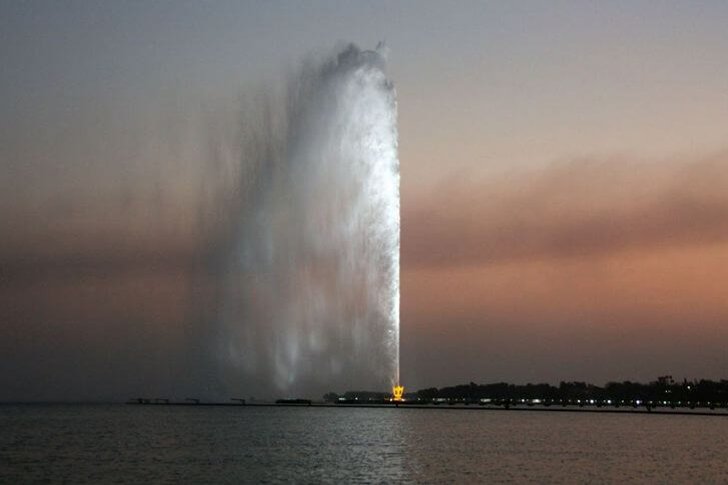
Masmak fortress
The historical building of the capital of Riyadh, erected under the ruler Muhammad ibn Abdullah ibn Rashid in the 19th century. At the beginning of the 20th century, the fort was conquered by the future founder of Saudi Arabia, Abdulaziz. Now the fortress has been turned into a historical center; a museum and a mosque are located on its territory.

Madain Salih
Archaeological complex of ancient structures of the 1st c. BC. The buildings remained from the time of the ancient Nabatean city of Kherga, which was located at the crossroads of important trade routes. In the surviving buildings, you can see elements of Phoenician, Egyptian and Assyrian architecture.

Rub al Khali desert
It occupies most of the territory of Saudi Arabia. This is the hottest desert on the planet. Hundreds of years ago, on the site of lifeless sands, rivers flowed and ancient cities roared. The oases of Liwa, El Ain and the huge El Jiva are the remnants of the former fertile plain, which over time was filled with sand dunes.

Asir National Park
The reserve was created to preserve the natural world of Saudi Arabia. This place is in the mountains. For the convenience of visitors, there are hundreds of places for family camping with running water, car parks, playgrounds and places for grilling. Juniper groves grow in the reserve and rare species of animals live.
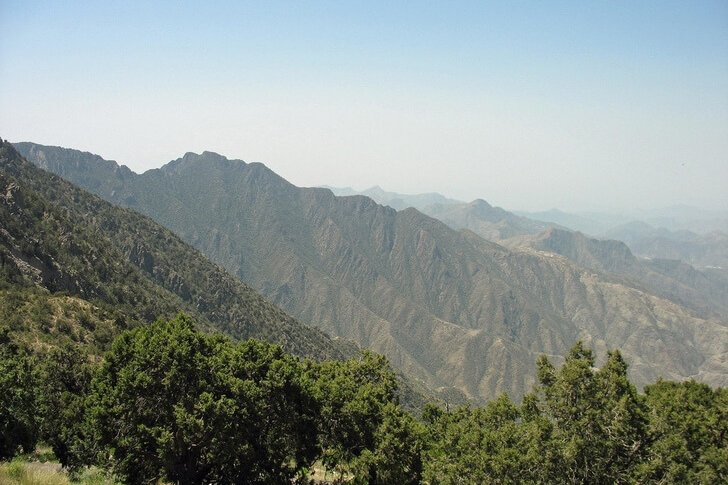
Skyscraper Burj Al-Mamlaka (Kingdom Centre)
A 99-story building in Riyadh topped with a needle-like structure. The observation deck of the skyscraper is located at an altitude of 300 meters, it offers a panoramic view of the capital. The Royal Center is one of the main attractions of the capital and its visiting card.
